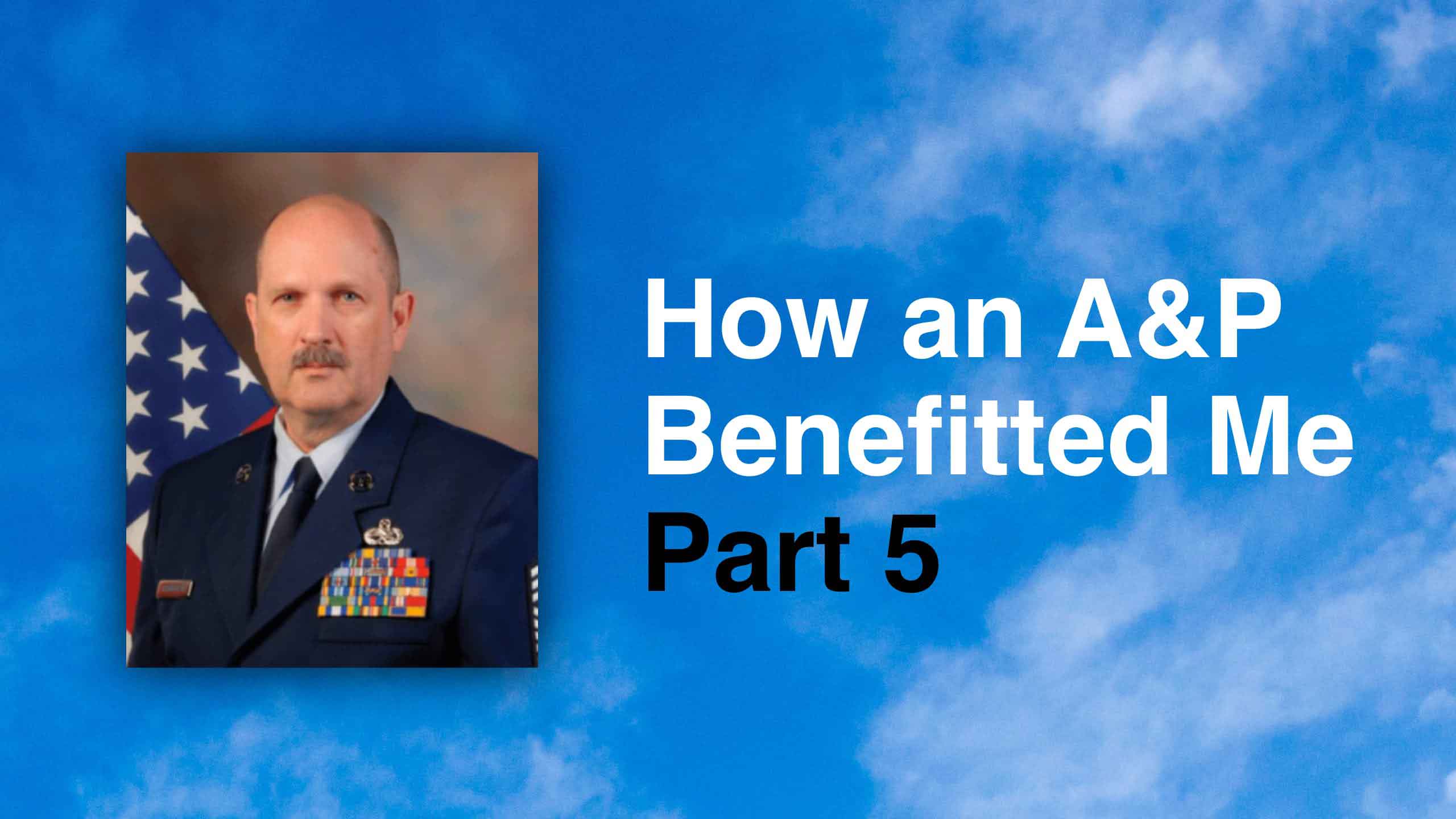How Having an A&P Benefitted Me Part 5

Just a quick recap from #4.
Times were still tough in 1984 for civilian aircraft mechanic jobs but I found out that my old A&P school, Colorado Aero Tech, was opening a new campus in Cheyenne Wyoming. I interviewed and was hired on the spot and the Director asked which block I wanted to teach. Turbine engines was always my favorite and he assigned that to me.
So fresh out of the Air Force I show up in Cheyenne Wyoming and my first day of work. Within a few hours I found out from the other instructors that the course was going to have to be built. They had lesson plans from the main campus in Denver and some training engines and that was about it. And to top it off the lesson plans didn’t match the training engines we had for the course.
The end result of this was a few trips to Denver to scavenge what I could to create a viable turbine engine block. One of the requirements was to have an engine on a test stand for the students to run and the only “complete” engine we had was a Rolls-Royce Dart that was still in the shipping can. Oh, and the massive four blade prop that went with it. Opening the can was a little bit of a shock because the desiccant had not been maintained and the seals had obviously let loose. But it as all we had and the Director made it clear that there was no budget for a different engine. So over the next few months we cleaned it up and flushed it out, made a monster test stand on wheels from scrap I-beams, poured a concrete pad with tie downs, and hung that baby on the stand and installed that monster prop. Yeah okay, it wasn’t a monster compared to big props but for an A&P school test stand it sure was.
After a few months of hard work we had a fully functioning Gas Turbine block of instruction but this was also a time where I learned a hard lesson. When I took the position the Director stated a particular pay rate but I didn’t get anything in writing. My first paycheck was considerably lower and when we talked he denied the agreed to rate and I told him I couldn’t live on what he was paying me. The guy simply shrugged his shoulders and stared at me. So from that moment I started looking for another job. Lesson learned – get everything in writing. Yeah it annoys some people because it comes across like you don’t trust them, but it’s your life and livelihood.
Eventually I got a job in Denver as a Porsche mechanic and by the end of the year had signed up with the Colorado ANG. Back in the 70’s when I was in A&P school, we had a field trip out to Buckley, now an AFB, and had toured their facilities. On top of that we had some early A-7’s at Sheppard that we used for training so I was familiar with the aircraft. I was also a full-time student during this period where I studied theology.
COANG was a great unit during the three years I was there. The A-7 was an amazing aircraft and was in fact the first aircraft with a HUD. I made Staff while I was there and after finishing school, took a job in Virginia working for a large Part 135 operator.
Truthfully my A&P didn’t help much in this Guard unit, mainly because I signed up as a Buck Sergeant which was really equivalent to SrA, and I was a Weekender. But it gave me a taste of life in the ANG and for the most part I liked it. But I also got to see the shady side of aircraft maintenance while I was there. The AF had issued an Urgent (or maybe Immediate) Time Compliance Technical Order against the A-7. This TCTO required an inspection of the upper anti-collision rotating beacon cannon plug. If positioned wrong the plug could foul the push pull rods that ran down the spine to the horizontal stabilators. One day a pilot was out on the range and after pullout from a run the stick jammed in the full rear position. He couldn’t eject due to the stick and it was extremely difficult to keep the aircraft flying. There was a Readers Digest story written about the event. He managed to land the aircraft with great difficulty, but a less experienced pilot probably would have died. As it turned out, one of the Technicians in the Phase Docks had pencil whipped the TCTO on that aircraft and had done so on many others. If I remember correctly nothing happened to him other than maybe a “talking to”. That’s the dirty side of the Guard and Civil Service, and even Active Duty. Often things are covered up to protect careers which totally conflicted with the ethics I was taught in A&P school and in my military aircraft maintenance training. Sadly, I would also see the same sorts of things happen in civil aviation as well. Getting older means a loss of innocence and the crushing of some of that youthful idealism we all have, but that’s the case no matter what industry you wind up in.
And even though things didn’t go the way I thought they would, the time setting up and teaching in an A&P school added immeasurably to my portfolio of experience which would serve me well in the years to come.
Next episode – Using my A&P in anger.
